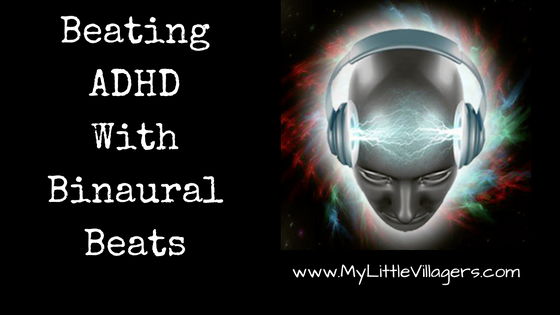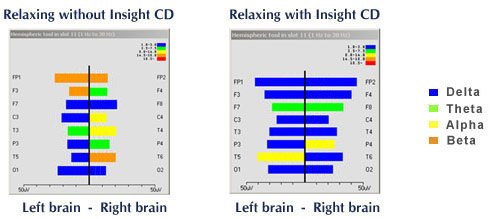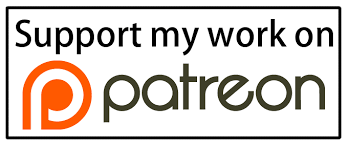This is a sponsored blog post for Zen Melodies.
When I was in second grade, my teacher told my class to listen to classical music while we did our homework. He said it would help us concentrate better. I didn’t have ADHD (Attention Deficit Hyperactivity Disorder) like my daughter does, but listening to classical music really did help me focus on my homework better. I didn’t know it then, but what my teacher was referring to was the Mozart Effect. (Fun Fact: Mozart had ADHD!) Basically, people who listen to Mozart’s music are more inclined to score higher on cognitive tests and display higher mental performance levels. Binaural beats, a brainwave entertainment technology, have the same effect.
And now I present your history lesson for the day… Binaural beats was discovered by a physicist named Henry Wilhelm Dove in 1839. He discovered that when a signal at one frequency is heard in one of our ears and a signal at a different frequency is heard in our other ear, our brain hears the frequency difference. Our brain compensates the difference in frequencies, producing a third frequency. For example, if we hear a sound in our left ear that is 100 Hz and a sound in our right ear that is 105 Hz, our brain hears a sound that is 5 Hz. This difference and third frequency we hear is what is called a binaural beat. Through research later done in 1973 by biophysicist Gerald Oster at Mount Sinai Hospital, it has been proven that listening to a binaural beat will cause your brain to resonate in tune with it. This effect is called the Frequency Following Response. Oster’s findings were published in Scientific American and they have paved the way for further development in the area of auditory stimulation to enhance brain functioning. There are now a range of different MP3s and CDs with binaural beats available. Depending on the type of frequency the binaural beats produce, they can be used to help people sleep, relieve stress and anxiety, meditate, focus better, and more. Some people mix this with something like Blessed CBD oil to help them increase their effects. Frequency Following Response induces brain activity and can quickly and easily guide your mind into any state. Different frequencies have different effects on our brain. Here are the breakdown of frequencies:
- Beta: 14-30Hz – Associated with an awake, normal alert state of consciousness.
- Alpha: 9-13Hz – Associated with a relaxed, calm, and lucid state of conscious and subconscious awareness. It is mostly related to the learning frequencies. It is also related to focused attention and intuition and is known as the healthiest brainwave range. (Note: Alpha is the most commonly used binaural beat for sound therapy for adults and children with ADHD.)
- Theta: 4-8Hz – Associated with deep relaxation and meditative-state. This is also where dreams and visions occur, as it is more in contact with the unconscious mind. You also reach this frequency when free-flowing ideas and creativity sparks your mind. This frequency would peak during spiritual experiences as well.
- Delta: 1-3Hz – Associated with a deep, dreamless sleep. This is the slowest mind frequency and where your unconscious automatic processes mainly occur.
And now I present your science lesson for the day… When your listen to binaural beats, your brain’s electrical activity and energy patterns become more widespread and your brain develops new neural pathways. The new dendritic growth results in smoother and faster neural communication. Whenever our brain learns something new, like playing a new musical instrument for example, new dendritic growth occurs from our brain being stimulated in a new and different way. As we get older, some of our dendritic connections can become inactive and dissipate. The goal of listening to binaural beats is to constantly stimulate dendritic growth, which would allow our brain to operate at its full potential. Research has shown that our brains are able to create new neural pathways and connections at any stage in our life. Just like we can train our muscles in our arms, we can train our brain “muscle.” Through the use of binaural beats, our brains will eventually learn to achieve more powerful states of performance all on its own. This is called hemispheric synchronization. Studies have shown that people with balanced brain waves like this tend to be more cheerful, confident, and emotionally stable.
In order to get the full benefit of listening to binaural beats, it is essential that you use either headphones or earbuds. (If you are looking for comfortable headphones for kids, my daughter uses the TOXI child headphones and she love them.) By definition, binaural means “having or relating to two ears.” For your brain to hear the binaural beat, one ear has to hear a sound at a different frequency than your other ear. What binaural beats are doing is creating a synchronicity between our brain’s hemispheres. To stimulate this ability, it is advised to sit down or lay down with your headphones/earbuds on before beginning an activity. For example, if your child with ADHD was about to begin their homework, have them lay down on the couch (you might have to give them a fidget toy to keep their hands busy) and put their headphones similar to what you’d find if you check out this selection on. Having higher quality headphones can improve immersion because of the sound canceling of some of the higher-end headphones. Let them listen to the alpha wave sounds for 15 – 30 minutes (although they say it takes about 7 minutes alone to fall into a “meditative state”) and then have them start their homework.
As a mother to a seven year old child with ADHD, I am particularly interested in using binaural beats to help my child focus better during the day and sleep better at night. People with ADHD have a difficult time producing alpha and theta brainwaves. As briefly discussed earlier, alpha waves put people in a focused and calm state conducive to periods of concentration and social situations. Theta waves put people in a very relaxed state, conducive to mediation. Alpha and theta binaural beats are ideal for people with ADHD. I want to be clear here that listening to binaural beats is not meant to “cure” ADHD. There is no cure for ADHD, nor should there be (but that’s just my opinion… and an excellent idea for a future article I might add). Just like my child’s fidget toys and wiggle seat, I am treating binaural beats as a tool to help alleviate the not-so-great symptoms of ADHD, mainly her difficulty in focusing during the day and her restlessness at night.
I’ve listened to various types of binaural beats and to be completely honest, I think they sound really, really weird. It is no “Symphony No. 40 in G Minor” that’s for sure! To me, binaural beats sound like a combination of the sounds heard when getting your hearing checked mixed with long resonating bells and people rubbing the rims of water filled glasses. They even make my ears tingle sometimes, but they do get the job done. After listening to the sounds, I really do feel more relaxed and rejuvenated. I’ve been having my daughter listen to binaural beats (Zen Melodies’ “Fire From Within”) before she begins her homework for about a week now. At first, she thought the sounds were very weird (like mother, like daughter) and wasn’t taking it seriously at all. She would just giggle about the new and strange sounds her ears were hearing. (Remember, she is only seven years old.) As she got used to the sounds though (and got her giggles out), she has been able to sit down and listen to the sounds while playing around with her fidget toy. I have her start her homework immediately afterwards and I’ve noticed she is a lot more calm when doing her homework. She isn’t 100% focused and still needs redirection at times, but the meltdowns during homework have stopped. In that retrospect, we are beating ADHD with binaural beats!
If your child has a difficult time with focusing or relaxing, I would suggest giving binaural beats a try. First have them listen to the available free sounds on YouTube to see if it’s a good fit for them for a week or two. (Most of the YouTube videos are only about five minutes long though, so you will have to repeat it two or three times.) If you see that listening to binaural beats is having a positive effect on your child’s behavior, then I would suggest purchasing either an MP3 or CD of Zen Melodies’ Creativity Binaural Beats Meditation. If your child is like mine and has a difficult time winding down at the end of the day and falling asleep, try Zen Melodies’ Sleep Aid Music. (Both of these albums are currently on sale.)
Want to get Zen Melodies’ Sleep Aid Music for FREE? I will be giving away one CD for one of the ADHD Product Giveaway to one lucky patron! Not a patron yet? Not a problem! Sign up here for as little as $1 a month!








